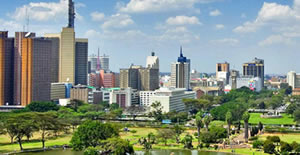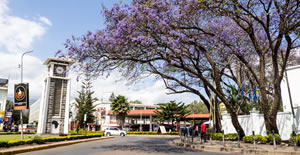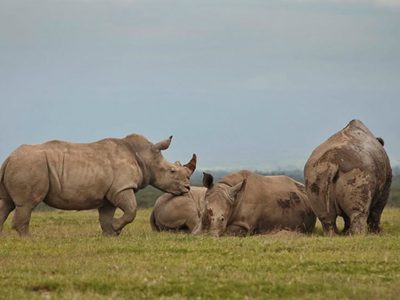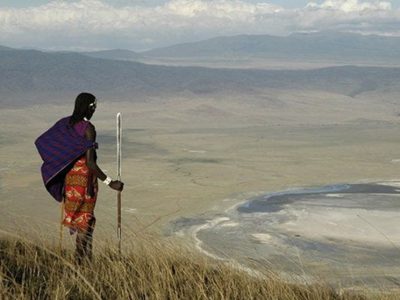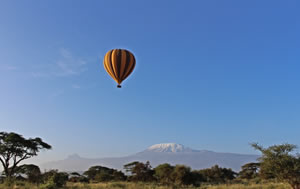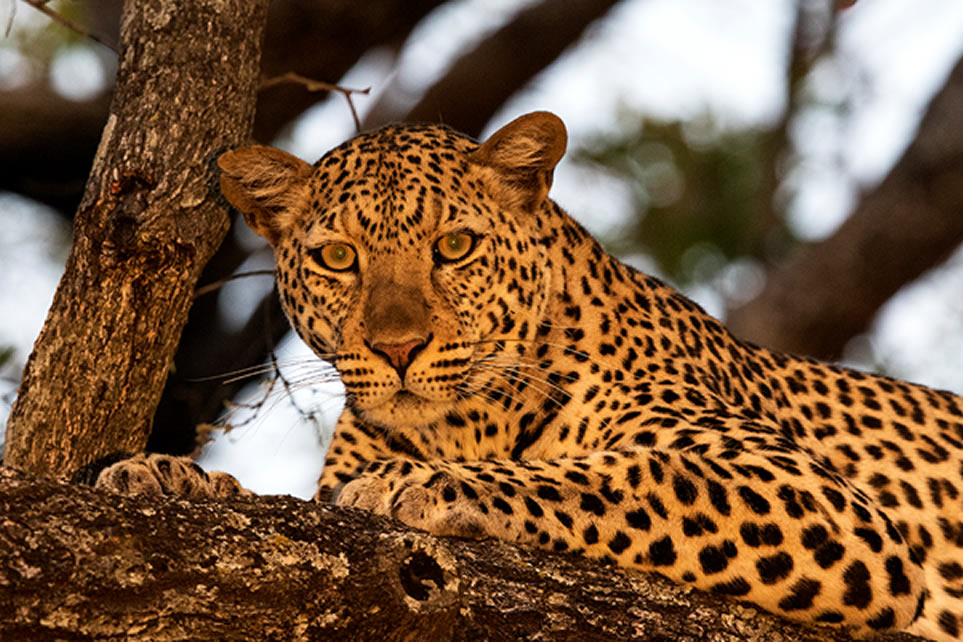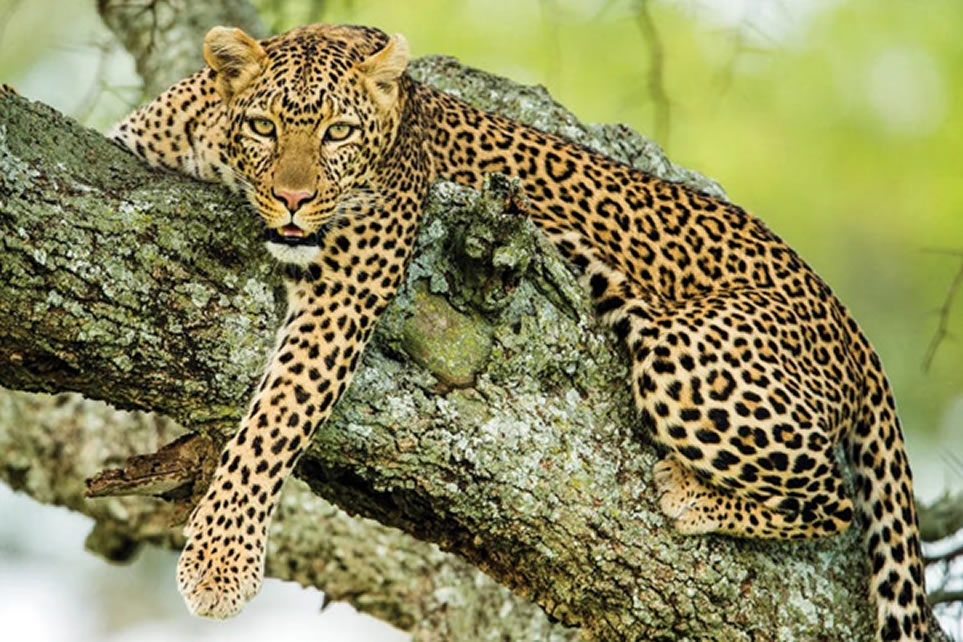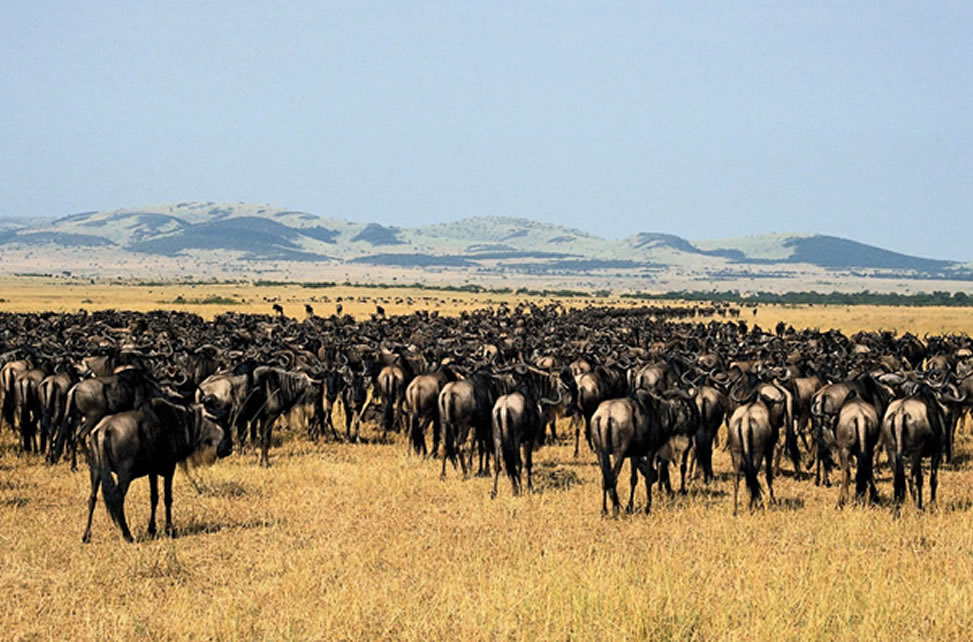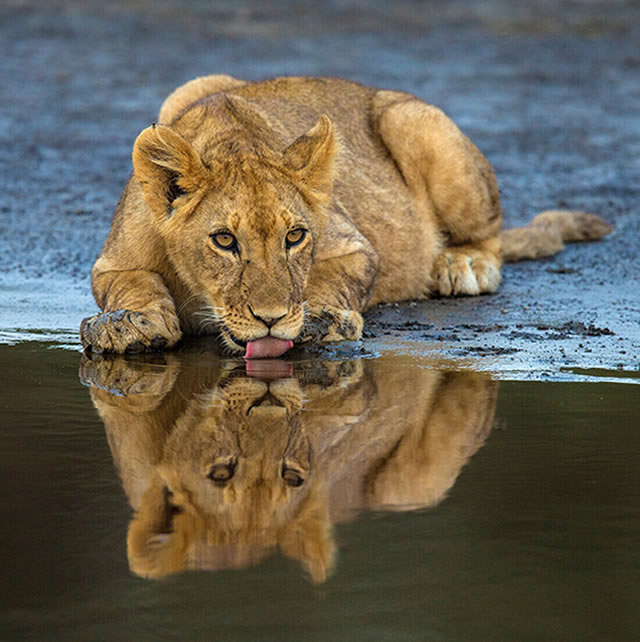Serengeti National Park
Deprecated: preg_match_all(): Passing null to parameter #2 ($subject) of type string is deprecated in /home/wildlif/public_html/wp-includes/media.php on line 1864
Deprecated: preg_split(): Passing null to parameter #2 ($subject) of type string is deprecated in /home/wildlif/public_html/wp-includes/formatting.php on line 3479
General Information
Serengeti National Park is found in Tanzania in East Africa. The park, which was established in 1952 is among the most famous and leading tourist attraction in Africa. It lies at the heart of the Serengeti Ecosystem which extends all the way from the Ngorongoro Conservation area in the south to Kenya’s Masai Mata National Reserve to the north. Covering an area of 14,570 square kilometers, Serengeti National Park is located in north western Tanzania, about 350 kilometers from the city of Arusha.
Formerly part of Masai land, the Serengeti derives its name from the Masai word “siringet” which can be translated to mean “the plains that seem to extend forever”. This is in reference to the sea of endless grasslands and rolling, grassy hills that characterize Serengeti National Park. Although a better part of the Serengeti, especially the south east mainly consists of grasslands, a substantial area that makes up the Serengeti also features a wide range of landscapes and ecosystems. You will note the endless plains of grass give way to areas of iconic acacia forests, desiccated soda lakes, to lush riverine vegetation and granite outcrops.
Undoubtedly, Serengeti is the highlight of any visit to Tanzania. Besides a high concentration of BIG CATS and other predators, Serengeti is also the heart of the annual wildebeest migration. The migration spends about 10 months in Tanzania. Over 1.5 million Gnus accompanied by about 250, 000 Zebras roam through the Serengeti plains for the better part of the year. This is one of the leading attractions to Tanzania. The Serengeti plains are so vast, and the migrating herds so dispersed that it is almost impossible to sight at least some part of the migration no matter when you travel to Serengeti.
The annual wildebeest migration comprises of an annual cycle that sees the animals cover a 1,200-kilometer journey traversing through the wilderness in Tanzania and Kenya. The Mara and Grumeti Rivers form part of the breath-taking action that highlights the migration. These two Rivers teem with ferocious Crocodiles that patiently lay in wait of the Gnus that arrive to quench their thirst or cross over the Rivers annually. The other highlight includes prides of Lions and a significant population of Cheetahs that trail the migration herds. For them, this is a season of plenty of prey. Food is abundant and the preys are easier to bring down. This forms one of the best predator vs prey action that you will ever come across. Spotted Hyenas which can be predators or scavengers depending on circumstances will patrol the savannah looking for weak or injured prey to bring down. If not possible, they will chase Cheetahs and even Lions out of their fresh kills, or be forced to be patient enough to scramble for left overs together with jackals and vultures.
Below, we make a brief description of various parts and areas of the massive Serengeti National Park.
Ndutu Plains and Lake Area
This is found in the southern part of the Serengeti and is part of the wider Ngorongoro Conservation Area. It mainly consists of short grass plains that boasts of an abundance of gazelle and other wildlife even before the migrating herds arrive. During their journey down from Kenya every year, the Ngorongoro Conservation Area plays host to one of the world’s greats natural spectacles – The Great Migration. It is between the months of December and April each year that this area becomes very special. The migrating herds of wildebeest arrive in December from northern Serengeti. The annual calving season that sees about half a million calves born between February and March takes place here, followed by the beginning of the annual migration towards Central Serengeti in April. Lake Ndutu, a small seasonal lake which is surrounded by beautiful acacia trees is also found here. It is one of the attractions to this area for both tourists and wildlife during this period. There is a good population of Masai Giraffes that inhabit the area surrounding the lake. The Lake is also a birdwatcher’s paradise as it supports a rich bird life, including a good number of lesser and greater flamingos.
The Serengeti Plains:
The rolling landscape of the south eastern Serengeti plains appears to be seemingly endless, or a land that seems to extend as the Masai call it. This endlessness is only rarely broken by the occasional Kopje (small rocky hills). Trees are conspicuously missing from these open plains. The central Serengeti plains are undoubtedly the cornerstone of Serengeti National Park’s wildlife ecosystem. It is recorded that this area came about approximately 3 million years ago after the massive eruptions of the Ngorongoro and other volcanoes in northern Tanzania. The eruptions led to a thick rain of ash settling over the plains, creating a hard top coat that affected the rooting of trees while enabling the growth of shallow rooted grasses which were full of nutritional minerals. It is no surprise then that these mineral rich grasses (with minerals being essential in many animals’ diets- especially lactating mothers), attract more than 80% of the wildebeest migration that give birth on these plains. These life-giving plans become a bee hive of activity after the short rains of October to December. The shooting grass is tender and sweet, and animals take advantage of this to enhance chances of growth for the new born calves. It is when the short grasses are depleted, and water scarce at the onset of the dry season that the migration moves further into Central Serengeti.
The Seronera Valley – Central Serengeti:
This area is located south Central of Serengeti National Park. The ecosystem consists of many water courses, rivers and several Kopjes. This attracts many wildlife species, making the area one of the best for game viewing in Serengeti. Along the Seronera River, you will find the riverine forest. Wildlife us abundant here, and its one of the best places to view Hippos wallowing in the waters. Within this area, you will find diverse game drives circuits, with the Seronera River circuit and Kopjes circuit being some of the most rewarding. Located close to this area is the Serengeti Visitor’s Center. A drive to this facility after a morning game drive is well worth it. Here, you will find some wildlife displays, and a gift shop that sells route maps, post cards and Serengeti information leaflets. You can also treat yourself to snacks and cold drinks which are on sale here. There is also a picnic site where you can enjoy your packed lunch during your full day game drive, and an interesting information trails that winds up at a nearby Kopje
Being the most central and most visited part of the Serengeti throughout year, Seronera is the area where most permanent safari lodges and camps in Serengeti are built. These include Seronera Wildlife Lodge, Angata Serengeti Camp, Ole Serai Luxury Tented Camp- Seronera, Serengeti Wild Camp, Kisura Tented Camp, Kiota Camp, Serengeti Serena Lodge, Olakira Camp, Tumbili Camp among others.
Moru Kopjes.
The Moru Kopjes (Moru means “old” in Maa, the language of the Masai) lie further north on the great migration path. The Kopjes are a display of interesting geological formations that are made up of ancient granite, left behind standing after hundreds of years or erosion and weathering. Geologists will find this particular area fascinating. It is after these rocky outcrops, ‘kopjes’ that the “Pride Rocks” in The Lion King movie drew their inspiration. The game viewing experience here is excellent all year round due to presence of water sources and pastures. The high standing Kopjes are a favorite to Lions, Leopards and Cheetahs who use them as vantage points from where they can see prey and enemies. Rainwaters that gather in the rocky clefts provide the much-needed drinking water for resident wildlife and sightings are common and regular especially during the dry months when the Big Cats lie in wait of prey that come to quench its thirst. It is not unusual to come across a whole pride of Lions basking in the sun while comfortably lying on the rocks. Half a century ago, the Kopjes used to act as natural shelter for Masai herders, and today, you may come across paintings on the rocks.
Simba Kopjes Guide.
The Simba kopjes are named after the lions (Swahili name for Lion), which frequently use these kopjes to just lie and bask in the sun. It is also common to come across baboons, Klipspringer, Giraffes and various bird species around this area.
The Western Serengeti Corridor:
This renowned, game rich corridor is made up of a 50-kilometer-wide strip of land that follows the Grumeti River from west of the Seronera area, stretching all the way to Lake Victoria. This less visited area offers not just unique wildlife viewing opportunities but also great topographical viewing that includes Valleys, Hills, Rivers and flood plains. This is in stark contrast to the central and southern Serengeti plains. This beautiful corridor is dissected by the perennial Grumeti River and its fringing belt of riparian woodland. Between the months of May and June, the area hosts the annual wildebeest migration as it follows its cycle from central Serengeti towards Masai Mara to the north. It is therefore no surprise that its during the months between May and July that this area receives most tourists. Wildebeests, Zebras and even gazelles attempt to cross the Grumeti River with Crocodiles (some up to 6 meters long) waiting with baited breath, while Lions on the other side wait to ambush the weak and injured for easy meals. There is more to the western Serengeti corridor than just the migration. A substantial part of non-migratory wildlife is supported by its habitat. These include resident cats and other predators, Eland, Masai Giraffes, Hartebeest, Hippos and Impalas that reside around the River. A big population of Black and White Colobus monkeys and other primates and various bird species inhabit the wooden habitats in the corridor.
Northern Serengeti(Lobo, Kogatende and Bologonja areas).
Heading north from central Serengeti, you come across Lobo Hills. With all its rolling hills and massive granite outcrops, this is arguably the most undisturbed and scenic part of Serengeti. This area which has to a large extent retained a tangible wilderness character is home to a huge variety of resident wildlife. It is only the wildebeest migration parade that interrupts this annually during their journey towards Masai Mara. This is one area with highly rewarding game viewing experiences. Here, you can sometimes trail and observe wildlife for hours alone, or with only few other tourist vehicles around you. Its location further from the populous central Serengeti makes it inaccessible for most tourists, although it attracts higher numbers between July and November- The Migration Season. A drive down this area sees the vast expanses of the signature Serengeti grassland plains disappear dramatically, making way for thick scrubs and acacia woodland bushes. Due to the undulating nature of the landscape, it becomes easier to spot animals. The sightings change too, with this being one of the areas where you will see less plains game. It however home to exceptionally large lion prides and Elephants sightings are also common.
The Lobo Kopjes offer a higher ground area. This is an amazing vantage point for those trailing the migration. The views are spectacular as the migrating herds head down towards the Mara River and onto Kenya and while on their way back from November. Lobo Wildlife Lodge and Serengeti Migration Camp are some of the few lodges found here. East of Lobo migration camp is an amazing game viewing circuit rich with watering wholes that attract a variety of wildlife. Buffalos, Zebras and the rare Klipspringer are some other common non migratory animals that one can see here.
Further north of Serengeti, you arrive at Kogatende area, also known as Wogakuria, after the Wogakuria hills that are found here. At the foot of these hills the Mara River cuts across the north-western sector of the National Park and provides the location for many of the best ‘river crossings’ you are likely to witness. This area is on the other side of the Mara River to the famous Lamai Wedge. Kogatende area is a bee hive of activities between July and October, and most accommodation facilities here are small, mobile tented camps that are only operational during the migration. The Kogatende area is synonymous with unspoilt and untouched Serengeti plains coupled with exciting, almost daily river crossings, a healthy population of big cats and regular sightings of Black Rhinos. It is also worth mentioning that Pangolins are common sightings here, probably the only area of the Serengeti that these endangered species can be sighted.
Halved into two by the world-renowned Mara River, and with lesser tourist numbers, the area is simply stunning. From July, this area if teeming with thousands of Wildebeests making their back and forth movement towards the Mara and also the Lemai Wedge where a good number of them will stay until October. Although big cat sightings are not sometimes the best here due to the tall grass, this area is a go- to for anyone planning to experience the migration in a big way.
Bologonja area of the Serengeti is located a short distance south of the border between Kenya to the north and Tanzania. There is only a ranger’s post north of it before entering Maasai Mara game reserve. This is however not allowed for tourists as its not a designated immigration point. Tourists have to drive all the way to Ndabaka gate where they exit the Serengeti and drive all the way to Masai Mara via the Isebania border crossing point. The alternative is to fly from Serengeti’s Kogatende airstrip to Masai Mara via Tarime border point for immigration clearance. Bologonja is named after the Bologonja River.
From the nearby Kuka Hills, a natural water stream and other underground springs flows to form the start of the Bologonja River, that eventually feeds into the Mara River further north from here. At Bologonja area of the Serengeti, you will find a flourishing ecosystem that consists of a forest, with animals living here, or frequenting the area to graze or quench their thirst. This offers you a chance to see Wildebeests and other plains game as well as cats as they approach the River. You will also be occasionally treated to a hunt or come across predators on a kill. Like the nearby Kogatende, most properties here are small semi-permanent tented camps with an average of 10 rooms. They are usually erected to follow the migration pattern so by November, they are moved to southern Serengeti. Bologonja gate located about 158 kilometers from Serengeti’s Naabi Hill Gate. Ndabaka Gate west of the Serengeti is located about 193 kilometers away.

10 Days (9 Nights): Best of Kenya & Tanzania Adventure
Tour Code: KWS0096This safari itinerary covers; Lake Nakuru National Park, Masai Mara Game Reserve, Serengeti National Park, Ngorongoro Conservation Area, Tarangire National Park and Amboseli National Park. One of the highlights of this safari is the Tarangire National Park, famous for the thousands of elephants that come down to the park during the dry season in search of water, but there are also plenty of wildebeest, zebras, giraffes, buffalo and hippos.
Road safari to Kenya and Tanzania most popular finest Wildlife Areas. Lake Nakuru National Park is home to White/Black Rhinos and flamingos. Masai Mara Game Reserve and Serengeti National Park; are popularly termed as the Jewel Parks of Kenya and Tanzania and home to different kinds of Africa wildlife including the Big Five. Ngorongoro Conservation Area for its beautiful sceneries. Amboseli National Park at the foot of Mount Kilimanjaro. Experience the rich culture of the Maasai people by visiting one of their Villages (Manyatta).
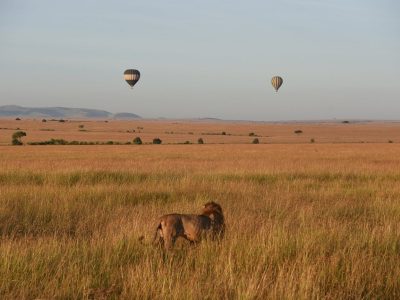
10 Days (9 Nights): Kenya & Tanzania Adventure
Tour Code: KWS107This safari itinerary covers; Lake Nakuru National Park, Lake Naivasha, Masai Mara Game Reserve, Serengeti National Park, Ngorongoro Conservation Area and Tarangire National Park. Explore Kenya and Tanzania most popular/exotic finest Wildlife Areas. Lake Nakuru National Park is home to White/Black Rhinos and flamingos. Lake Naivasha famous for boat trip. Masai Mara Game Reserve and Serengeti National Park; are popularly termed as the Jewel Parks of Kenya and Tanzania and home to different kinds of Africa wildlife including the Big Five. Ngorongoro Conservation Area for game drives at the floor of the craterand Jumbo Elephants and tree climbing Lions of Tarangire National Park. Tarangire National Park is famous for hosting huge herds of elephants-with the largest Tuskers calling it home and great towering baobab trees. Experience the rich culture of the Maasai people by visiting one of their Villages (Manyatta).

12 Days (11 Nights): East Africa Adventure
Tour Code: KWS103This safari itinerary covers; Masai Mara Game Reserve, Serengeti National Park, Ngorongoro Conservation Area, Amboseli National Park, Tsavo West, Ziwani Sanctuary, Taita Hills Wildlife Sanctuary and East National Park.
East Africa Adventure; covers Kenya and Tanzania most popular/exotic finest Wildlife Areas. Lake Nakuru National Park is home to White/Black Rhinos and flamingos. Masai Mara Game Reserve and Serengeti National Park; are popularly termed as the Jewel Parks of East Africa and home to different kinds of Africa wildlife including the Big Five. Ngorongoro Conservation Area for its beautiful sceneries. Amboseli National Park at the foot of Mount Kilimanjaro, Voyager Ziwani for night game drives and walking safari and Taita Hills Wildlife Sanctuary/Tsavo West/East National Parks popular for its beautiful sceneries, Shetani Lava flows, Mzima Springs and Rhino Sanctuary; likely to see Black Rhinos, herd of Red Elephants, Lions, Giraffes, Zebras, Hippos and different bird species. Experience the rich culture of the Maasai people by visiting one of their Villages (Manyatta).
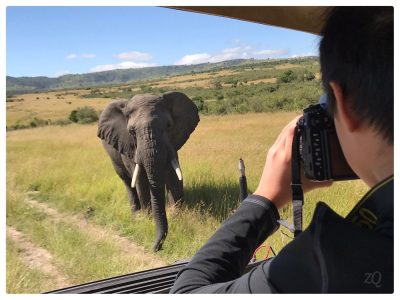
This safari itinerary covers; Lake Nakuru National Park, Lake Naivasha, Masai Mara Game Reserve, Serengeti National Park, Ngorongoro Conservation Area, Tarangire National Park, Lake Manyara National Park, Tsavo East & West National Park and Amboseli National Park. Photographic Safari covers Kenya and Tanzania most popular finest Wildlife Areas. Lake Nakuru National Park is home to White/Black Rhinos and flamingos. Masai Mara Game Reserve and Serengeti National Park; are popularly termed as the Jewel Parks of Kenya and Tanzania and home to different kinds of Africa wildlife including the Big Five, Ngorongoro Conservation Area for its beautiful sceneries, Tsavo East/West National Parks popular for its beautiful sceneries, Shetani Lava flows, Mzima Springs and Rhino Sanctuary and the Red Elephant of Tsavo and Amboseli National Park at the foot of Mount Kilimanjaro.; likely to see Black Rhinos, herd of Red Elephants, Lions, Leopards, Giraffes, Zebras, Cheaters, Hippos and different bird species. Experience the rich culture of the Masai people by visiting one of their Villages (Manyatta).

15 Days (14 Nights): Wilderness Adventure
Tour Code: KWS108This safari itinerary covers; Meru National Park, Samburu Game Reserve, Lake Nakuru National Park, Masai Mara Game Reserve, Serengeti National Park, Ngorongoro Conservation Area, Lake Manyara National Park and Tarangire National Park. Tarangire National Park is famous for hosting huge herds of elephants-with the largest Tuskers calling it home and great towering baobab trees. You will also witness the marvels of the Ngorongoro crater, The Ngorongoro Crater is the largest unbroken caldera of the 20 that are in the world teeming with all kinds of wildlife.Wilderness Adventure; Which covers ultimately Kenya and Tanzania most popular/exotic finest Wildlife Areas. These Parks/Reserves are the home to different kinds of Africa wildlife including the Big Five/different Bird Species. Enjoy splendid View of Mount Kenya and Mount Kilimanjaro (the highest Mountain in Africa) as well as learn the Samburu/Maasai Cultures at their Villages (Manyatta).

16 Days (15 Nights): Born Free Adventure
Tour Code: KWS104This safari itinerary covers; Meru National Park,Samburu Game Reserve, Lake Nakuru National Park,Masai Mara Game Reserve, Serengeti National Park, Ngorongoro Conservation Area, Amboseli National Park, Tsavo West and East National Park.
Born Free Adventure Safari, which covers ultimately Kenya and Tanzania most popular/exotic finest Wildlife Areas. These Parks/Reserves are the home to different kinds of Africa wildlife including the Big Five/different Bird Species. Enjoy splendid View of Mount Kenya and Mount Kilimanjaro (the highest Mountains in Africa) as well as learn the Samburu/Maasai Cultures at their Villages (Manyatta).

This safari itinerary covers; Meru National Park, Samburu Game Reserve, Lake Nakuru National Park, Lake Naivasha, Masai Mara Game Reserve, Serengeti National Park, Ngorongoro Conservation Area, Park and Amboseli National Park. Explore the most famous Kenya and Tanzania finest Wildlife Areas/sceneries. These Parks/Reserves are the home to different kinds of Africa wildlife including the Big Five/different Bird Species. Samburu National Reserve is known to offer some of the best sightings of leopards in Kenya and is home to unique wildlife such as the reticulated giraffe, somali ostrich and beisa oryx. Meru National park remains one of the most well preserved National parks offering the true filling of wilderness, the park is home to four of the “Big Five”. The park is famous as the setting for Joy Adamson's book 'Born Free”, the story of the Adamson's life and research amongst lions and cheetahs. Enjoy splendid View of Mount Kenya and Mount Kilimanjaro (the highest Mountain in Africa) as well as learn the Samburu/Maasai Cultures at their Villages (Manyatta).

4 Days (3 Nights): Lion Adventure
Tour Code: KWS109This road safari itinerary is very fascinating; it covers some of Tanzania famous National parks, Ngorongoro Conservation Area and Serengeti National Park. Meet Maasai People and learn their diverse culture, descend in Ngorongoro crater for game viewing as well as enjoying game drives at the plains of Serengeti National Park.
.
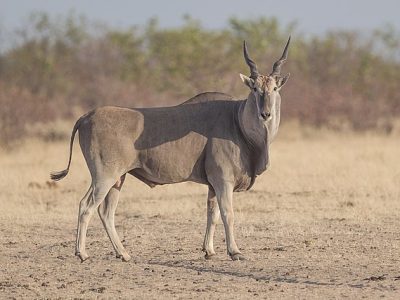
5 Days (4 Nights ): Ngorongoro Safari
Tour Code: KWS0121This safari itinerary covers; Arusha, Ngorongoro Conservation Area, Tarangire National Park and Lake Manyara National Park.
Road Safari, which covers some of Tanzania popular finest Wildlife Areas. Explore Ngorongoro Conservation Area for the beautiful sceneries and rich of Wildlife, the Jumbo Elephants of Tarangire and Lake Manyara National Park; famous for the tree climbing Lions. Experience the rich culture of the Masai people by visiting one of their Villages (Manyatta).

5 Days (4 Nights): Cheetah Adventure
Tour Code: KWS110This Safari Itinerary covers; Ngorongoro Conservation Area, Serengeti National Park and Lake Manyara National Park.
Road Safari, which covers some of Tanzania popular finest Wildlife Areas. Meet Maasai People and learn their diverse culture, descend to the floor of Ngorongoro crater for game viewing, enjoy game drives at the plains of Serengeti National Park as well as game viewing in Lake Manyara National Park.
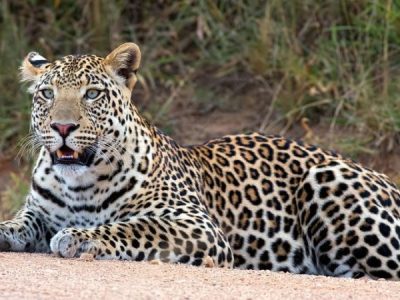
6 Days (5 Nights): Leopard Adventure
Tour Code: KWS111This safari itinerary covers; Ngorongoro Conservation Area, Serengeti National Park, Lake Manyara National Park and Tarangire National Park.
Road Safari, which covers some of Tanzania popular finest Wildlife Areas. Meet Maasai People and learn their diverse culture, descend in Ngorongoro crater for game viewing, enjoy game drives at the plains of Serengeti, Lake Manyara National Park as well as Tarangire National Park

7 Days (6 Nights ): Serengeti Safari
Tour Code: KWS0122This safari itinerary covers; Arusha, Ngorongoro Conservation Area, Serengeti and Tarangire National Park.
Road Safari, which covers some of Tanzania most popular finest Wildlife Areas. Explore Ngorongoro Conservation Area for the beautiful sceneries and rich of Wildlife, the Jewel Park of Tanzania (Serengeti National Park) and the Jumbo Elephants of Tarangire National Park. Experience the rich culture of the Masai people by visiting one of their Villages (Manyatta).

7 Days (6 Nights ): Serengeti Trail
Tour Code: WKS0116This safari itinerary covers; Arusha, Ngorongoro Conservation Area, Tarangire National Park and Lake Manyara National Park. The Ngorongoro Conservation area is a world heritage site, home to the "Big" five wildlife of Africa, Tarangire park is home to large elephant populations as well as the "big" five. Lake Manyara offers birdlife as well as wildlife. Serengeti the best wildlife spots in the world.
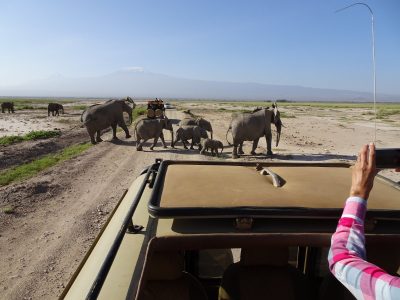
7 Days (6 Nights): Jambo Adventure
Tour Code: KWS105This safari itinerary covers; Masai Mara Game Reserve, Serengeti National Park, Ngorongoro Conservation Area and Tarangire National Park. A dream safari to Kenya and Tanzania most popular/exotic finest Wildlife Areas. Explore Masai Mara Game Reserve and Serengeti National Park; which are termed as the Jewel Parks of Kenya and Tanzania and home to different kinds of Africa wildlife including the Big Five. Ngorongoro Conservation Area for the beautiful sceneries and Jumbo Elephants and tree climbing Lions of Tarangire National Park. Tarangire National Park is famous for hosting huge herds of elephants-with the largest Tuskers calling it home and great towering baobab trees. You will also witness the marvels of the Ngorongoro crater, The Ngorongoro Crater is the largest unbroken caldera of the 20 that are in the world teeming with all kinds of wildlife. Experience the rich culture of the Maasai people by visiting one of their Villages (Manyatta).

7 Days (6 Nights): Serengeti Adventure
Tour Code: KWS0112This safari itinerary covers: Ngorongoro Conservation Area, Serengeti National Park, Lake Manyara National Park and Tarangire National Park.
Road Jeep Safari, which covers some of Tanzania most popular finest Wildlife Areas. Explore Ngorongoro Conservation Area for the beautiful sceneries and rich of Wildlife, the Jewel Park of Tanzania (Serengeti National Park) and the Jumbo Elephants of Tarangire National Park. Experience the rich culture of the Masai people by visiting one of their Villages (Manyatta).

8 Days (7 Nights ):Tanzania Safari
Tour Code: WKS0123This safari itinerary covers; Arusha, Ngorongoro Conservation Area, Serengeti, Tarangire National Park and Moshi (Mount Kilimanjaro).
Road Safari, which covers some of Tanzania most popular finest Wildlife Areas. Explore Ngorongoro Conservation Area for the beautiful sceneries and rich of Wildlife, the Jewel Park of Tanzania (Serengeti National Park) and Jumbo Elephants of Tarangire National Park as well as enjoy splendid view of Mount Kilimanjaro. Experience the rich culture of the Masai people by visiting one of their Villages (Manyatta).

This safari itinerary covers; Masai Mara Game Reserve, Serengeti National Park, Ngorongoro Conservation Area, Tarangire National Park and Taita Hills Wildlife Sanctuary (Saltlick).
A dream safari to Kenya and Tanzania most popular/exotic finest Wildlife Areas. Explore Masai Mara Game Reserve and Serengeti National Park; which are termed as the Jewel Parks of Kenya and Tanzania and home to different kinds of Africa wildlife including the Big Five. Ngorongoro Conservation Area for the beautiful sceneries, Jumbo Elephants of Tarangire National Park and Taita Hills Wildlife Sanctuary (Saltlick);one of the most exotic Kenya Tree lodge and finest Wildlife Area.Experience the rich culture of the Masai people by visiting one of their Villages (Manyatta).

8 Days (7 Nights): African Dream Adventure
Tour Code: KWS100This safari itinerary covers; Masai Mara Game Reserve, Serengeti National Park, Ngorongoro Conservation Area, Tarangire National Park and Taita Hills Wildlife Sanctuary (Saltlick).
A dream safari to Kenya and Tanzania most popular/exotic finest Wildlife Areas. Explore Masai Mara Game Reserve and Serengeti National Park; which are termed as the Jewel Parks of Kenya and Tanzania and home to different kinds of Africa wildlife including the Big Five. Ngorongoro Conservation Area for the beautiful sceneries, Jumbo Elephants of Tarangire National Park and Taita Hills Wildlife Sanctuary (Saltlick);one of the most exotic Kenya Tree lodge and finest Wildlife Area.Experience the rich culture of the Masai people by visiting one of their Villages (Manyatta).

8 Days (7 Nights): Big Cats Adventure
Tour Code: KWS0095This safari itinerary covers; Masai Mara Game Reserve, Serengeti National Park, Ngorongoro Conservation Area and Amboseli National Park.
Road adventure safari, which covers Kenya and Tanzania most popular finest Wildlife Areas. Explore Masai Mara Game Reserve and Serengeti National Park; which are termed as the Jewel Parks of Kenya and Tanzania and home to different kinds of Africa wildlife including the Big Five. Ngorongoro Conservation Area for the beautiful sceneries and Amboseli National Park at the foot of Mount Kilimanjaro. Experience the rich culture of the Maasai people by visiting one of their Villages (Manyatta)

8 Days (7 Nights): Tanzania Adventure
Tour Code: KWS0113This safari itinerary covers; Ngorongoro Conservation Area, Serengeti National Park, Lake Manyara National Park, Tarangire and Moshi (Mount Kilimanjaro).
Road Jeep Adventure Safari, which covers some of Tanzania most popular/visited finest Wildlife Areas. Explore Ngorongoro Conservation Area for the beautiful sceneries and rich of Wildlife, the Jewel Park of Tanzania (Serengeti National Park) and Jumbo Elephants of Tarangire National Park as well as enjoy splendid view of Mount Kilimanjaro. Experience the rich culture of the Masai people by visiting one of their Villages (Manyatta).

8 Days (7 Nights): Tanzania Trial
Tour Code: WKS0117This safari itinerary covers; Arusha, Ngorongoro Conservation Area, Tarangire National Park and Lake Manyara National Park. The Ngorongoro Conservation area is a world heritage site, home to the "Big" five wildlife of Africa, Tarangire park is home to large elephant populations as well as the "big" five. Lake Manyara offers birdlife as well as wildlife. Serengeti the best wildlife spots in the world.
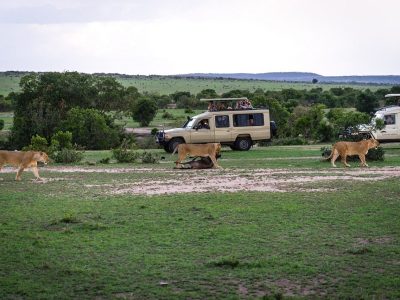
8 Days (7 Nights): Wildlife Adventure
Tour Code: KWS106This safari itinerary covers; Lake Nakuru National Park, Masai Mara Game Reserve, Serengeti National Park, Ngorongoro Conservation Area and Tarangire National Park. A wildlife adventure safari to Kenya and Tanzania most popular/exotic finest Wildlife Areas. Lake Nakuru National Park is home to White/Black Rhinos and flamingos. Masai Mara Game Reserve and Serengeti National Park; are popularly termed as the Jewel Parks of Kenya and Tanzania and home to different kinds of Africa wildlife including the Big Five. Ngorongoro Conservation Area for game drives at the floor of the craterand Jumbo Elephants and tree climbing Lions of Tarangire National Park. Experience the rich culture of the Maasai people by visiting one of their Villages (Manyatta).

Serengeti Balloon Safari
Serengeti National ParkA Serengeti balloon safari is an extraordinary opportunity to relish a bird’s eye-view of the phenomenal sweeping plains below. Tiny little dots rove across the diverse landscape and as you get closer you are spectator to the most magnificent view of dramatically striped black and white zebra, sashaying enormous grey elephants meandering to a waterhole, wiry warthogs foraging in the grassy scrub and subtle swishes of puffed golden tails reveal lions lolling under shady trees.
Deprecated: preg_match_all(): Passing null to parameter #2 ($subject) of type string is deprecated in /home/wildlif/public_html/wp-includes/media.php on line 1864
Deprecated: preg_split(): Passing null to parameter #2 ($subject) of type string is deprecated in /home/wildlif/public_html/wp-includes/formatting.php on line 3479
Deprecated: preg_match_all(): Passing null to parameter #2 ($subject) of type string is deprecated in /home/wildlif/public_html/wp-includes/media.php on line 1864
Deprecated: preg_split(): Passing null to parameter #2 ($subject) of type string is deprecated in /home/wildlif/public_html/wp-includes/formatting.php on line 3479
Deprecated: preg_match_all(): Passing null to parameter #2 ($subject) of type string is deprecated in /home/wildlif/public_html/wp-includes/media.php on line 1864
Deprecated: preg_split(): Passing null to parameter #2 ($subject) of type string is deprecated in /home/wildlif/public_html/wp-includes/formatting.php on line 3479


